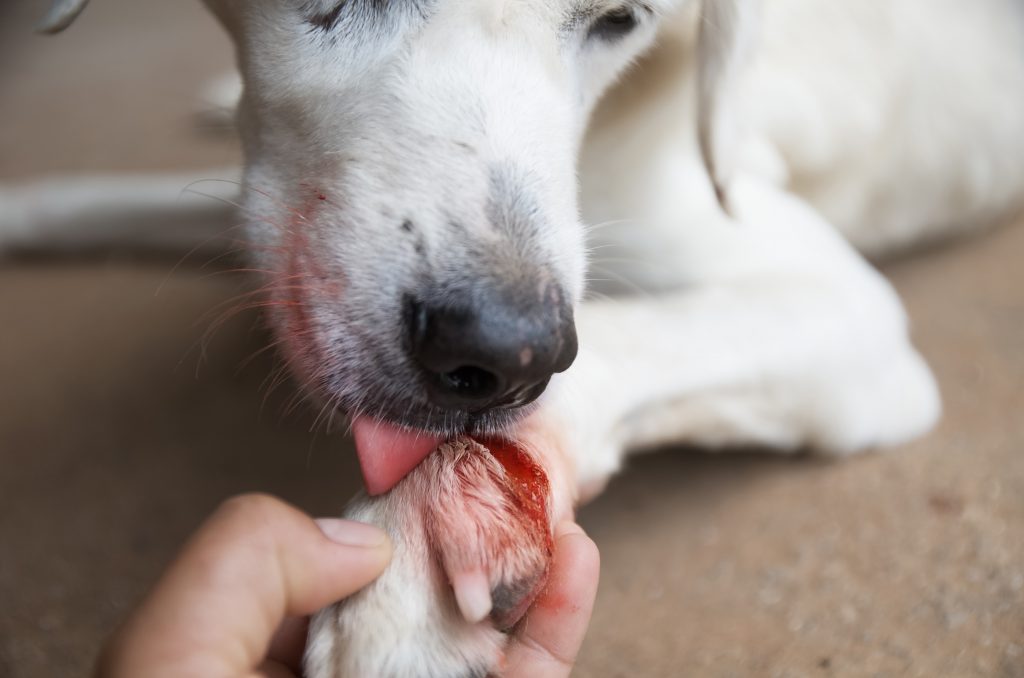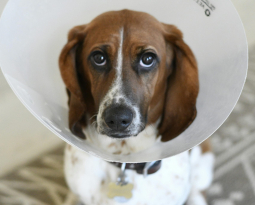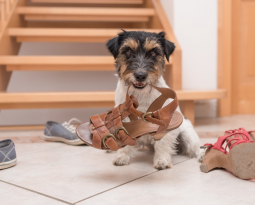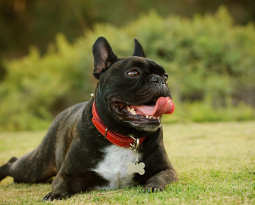Last time on the blog we talked about some specific injuries like hot spots, or how to prevent tick and flea troubles, but this time we decided we wanted to offer a primer on some of the basic first aid pet owners should know.
Pets, just like people, can come down with a wide range of illnesses and injuries, and while they need professional medical attention, often they need immediate care. To be the best pet owners we can, some things should be within our own abilities, so that our pets always have someone on hand who can help in the case of emergencies.
Note: If your pet is currently in need of help, call your vet/local animal hospital immediately and get them there! This blog is for informative purposes and should be read, before an emergency situation occurs!
Remember – first aid is not a substitute for veterinary care! But the knowledge contained herein may save your pet until you can get them to the vet and medical care they need. So read this, print it out, keep it nearby, but in case of emergencies know that you will need medical attention.
Okay, without further ado.
Pet First Aid
Seizures
Falling on their side, going stiff, salivating, biting down, eliminating, or even vocalizing or paddling, even for as short as 30 seconds – it is a seizure. Here’s how to help them get through the attack.
- Keep them away from furniture or any other object that they might potentially hurt themselves on.
- Don’t restrain them, this can cause more harm than good.
- Time the seizure as it happens. This can be invaluable information for your vet.
- After the seizure has passed, keep your pet calm, quiet, and warm
- Call your vet.
Poisoning
It can be difficult to know what is and isn’t poisonous to our furry friends. We’ve written a great number of blogs on the subject. Generally speaking, any product that would be hazardous for us (people) to ingest or be exposed too are likely toxic to pets. Cleaning products, pest control poisons, automotive fluids. There are plenty. If your pet comes into contact with any of that, look at the packaging and follow the instructions. If it stays to wash your hands after contact, you’ll need to wash your pet. If it says to flush out your eyes, do so for your dog or cat. And of course, call your vet!
If your pet got into anything, chewed on something, or has thrown up be sure to collect it in a plastic bag like a Ziploc and bring it to your vet so they have as much information as they can in diagnosing and treating your pet.
Bleeding
If your pet has a cut or external injury they are bleeding from, follow these steps to provide them critical first aid.
- Muzzle them. Pets will lick at wounds, it’s their way of trying to tend to them and keep them clean. Luckily for them, you’re here with the right tools!
- Using clean, thick gauze press on the wound to apply pressure. This should allow the blood to start clotting and halt the bleeding. This will take some time, usually several minutes, as the clot needs to be strong enough to stop the bleed. Don’t remove the bandage and check every few seconds, the constant change will slow the process. Just place and hold pressure for at least 3 or 4 minutes before checking.
- If the bleeding is on the legs and severe, applying a tourniquet can be the best move. Severe bleeding can become life-threatening faster than you realize. Use gauze or a rubber band between the wound and the body, apply a bandage and pressure over the wound. Get to your vet immediately! If getting to medical attention will take more than 15 minutes, make sure to loosen the makeshift tourniquet for 20-30 seconds every 15 minutes. While you want to halt the severe bleeding, cutting off blood flow completely can cause permanent damage.
If bleeding is internal it can often be difficult to notice. If you see any of the following symptoms, keep your animal warm and get them to a vet immediately! Bleeding from mouth, nose, or rectum, pale gums coughing blood, blood in urine, collapse, weak and rapid pulse.
Burns
There are two kinds of burns to be aware of when it comes to your pets. Chemical burns and ‘normal’ burns.
- In the case of a chemical burn affecting your pet, muzzle your pet and immediately begin flushing the burn with water.
- If the burn is more severe and not chemical in nature, again muzzle your animal right away and then apply an ice water compress to the burned area.
Choking
Choking can be a scary experience and confusing to diagnose. After all, pets frequently hack or ‘cough’ when they’ve eaten something, or a hairball for cats. If your pet seems to have difficulty breathing, paws at their mouth excessively, makes choking sounds, or their lips and/or tongue go blue – they may be choking
- Watch out! Choking animals are in a panic and can be a higher risk to bite!
- Look into your pets mouth to see if the obstruction is visible. If so, carefully, attempt to remove with tweezers (or what have you) but make sure not to lodge it further! If it’s not easy to reach or remove, don’t waste time attempting to get it yourself, get your pet to the vet as soon as possible.
- If your pet collapses while on your way to the vet, place both of your hands on the side of your pet’s ribs and apply firm, fast pressure. Alternatively, you can place your pet on their side and firmly strike the rib cage with the palm of your hand roughly 4 times. If this works, it will push the air out of your pet’s lungs and dislodge the object. Again, be sure to get your pet to the vet immediately, even if you are able to dislodge the obstruction as the process can be traumatic.
Shock
Your pet can suffer from shock following any number of other injuries or stresses. Signs to tell if your pet is suffering from shock include: shallow breathing, nervousness, dazed look, and/or a week pulse.
- Keep your pet warm, quiet, and restrained.
- If your pet has gone unconscious, keep their head level with the rest of their body to encourage proper blood flow.
- Get them to the vet immediately.
Heatstroke
Perhaps the most common affliction for pets in our area, heatstroke can happen so incredibly fast you need to pay attention! First, never leave your pet inside the car. We know better than most just how hot the inside of cars can get even when the outside seems bearable. That danger is magnified in the case of pets. That’s not the only place they can get/suffer from heatstroke. If they are left too long out doors in the heat, or even for a short time on those hot days with lack of shade and cool areas they can have a bout with heatstroke. To give them immediate care and help them recover their body temp do the following:
- Transport your pet to a vet immediately. If you are unable to, make sure to move them to a shaded area, out of direct sunlight.
- Place a cold, wet towel around their head and neck. Do not cover their face, eyes, nose, or mouth!
- Remove and replace the towel. Wring it out, get it wet with cold water again, and rewrap your pet.
- Use a hose or pour water over your pets body. Specifically, their abdomen and back legs. Use your hands to flush the water away as it absorbs the excess body heat.
- Get them to the vet ASAP.
Not Breathing
For whatever reason your pet has stopped breathing, remain calm and take these same steps to get them help.
- Open your pet’s airway by gently opening their mouth and manipulating their tongue forward until it is flat.
- Inspect for any obstructions blocking the airway. If so, follow the directions in Choking, above.
- Perform rescue breathing maneuvers. Close your pet’s mouth using your hand and breath (with your own mouth) into their nose until you see their chest expanding. After the chest expands, repeat every 4 or 5 seconds.
No Heartbeat
If you find your pet collapses and are unable to detect a heartbeat, immediate first aid may be the only thing that can save them! It’s imperative that you know exactly what to do to administer first aid. Know that it is unlikely your pet will survive even with resuscitation. It’s an incredibly traumatic experience for a pet to undergo, but in an emergency, it may give you the only chance. If possible, get yourself to the vet as you are attempting rescue breathing and compressions.
- On a firm service, lay your pet gently on their right side. Place one hand on your pets chest behind the elbow on their left front leg with your other hand under the pet’s chest to support it.
- For a medium sized dog, press down gently on your pet’s heart, pushing in about one inch. For larger dogs press harder, smaller dogs with less force.
- For cats and other small pets, cradle your hand around their chest so that your thump is on the left side of the chest and your fingers on the right. Perform compressions by squeezing between the thumb and fingers.
- For larger animals, press between 80-120 times per minute. Press 100-150 times per minute for smaller animals.
- Don’t perform rescue breathing and chest compressions at the same time. Alternate between breathing and compressions.
- Continue alternating breathing and compressions until you hear a heartbeat or have arrived at a vet who can take over the attempts.
This is a brief primer, covering some of the more common injuries and illnesses a pet owner may find that they need to address now, but remember that every single one should be immediately followed up with a trip the veterinary clinic. Your help can give your pet a better chance, but not if they don’t get the professional medical care they need.
If you don’t already have a regular vet, make sure you find one you trust to understand and care for your furry family member. If you’re in the Tucson area, give us a call here at Acoma Animal Clinic and we can help ensure your pet lives a long and happy life, with the necessary care.








